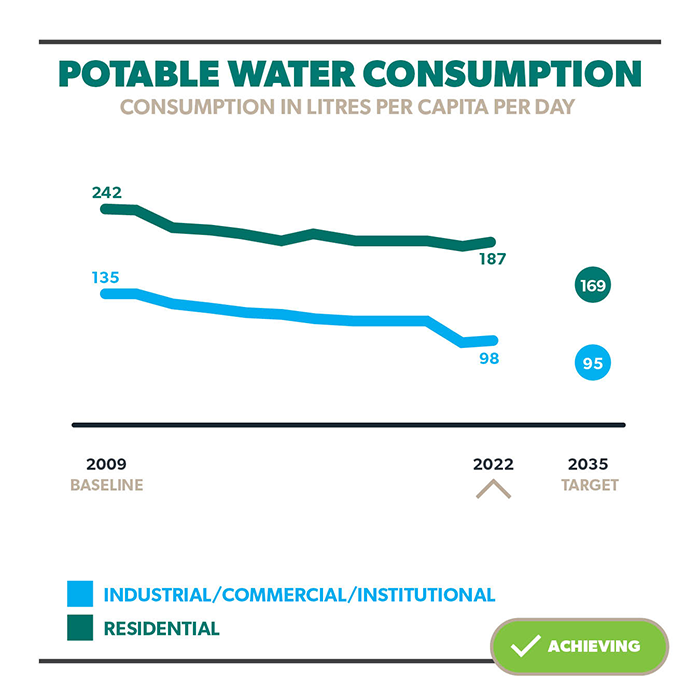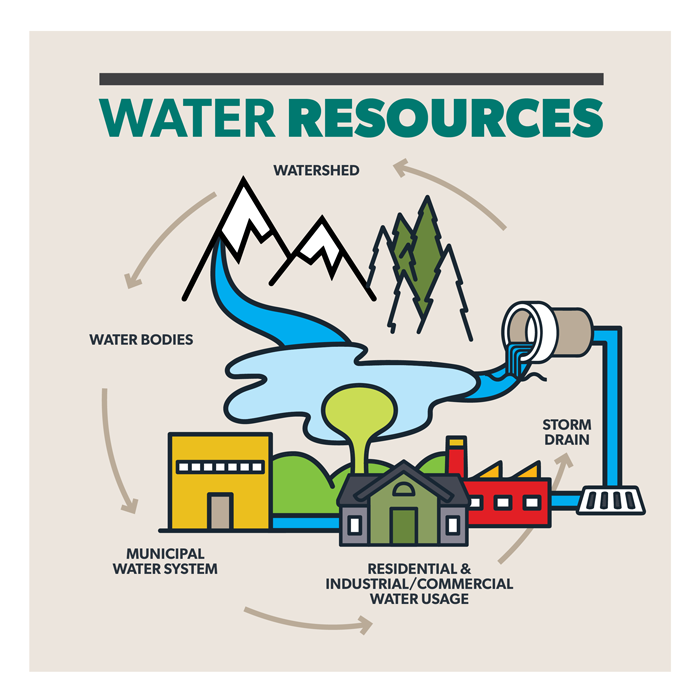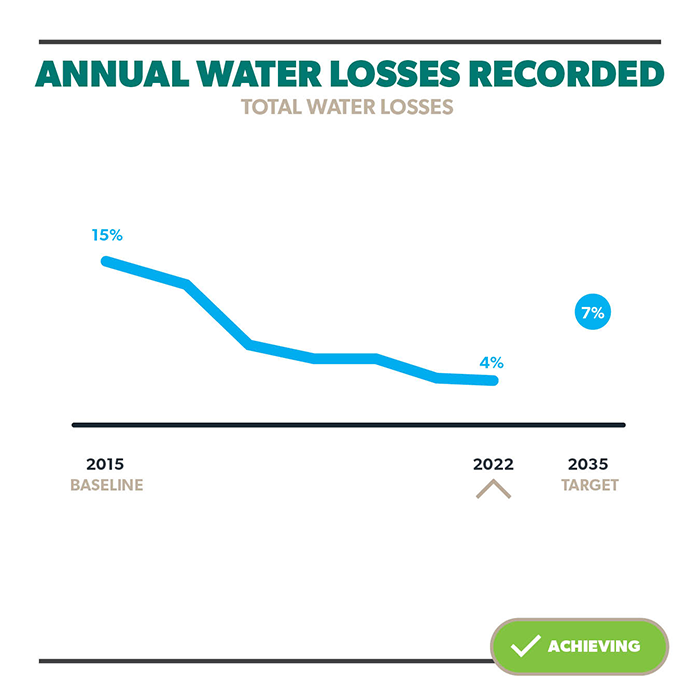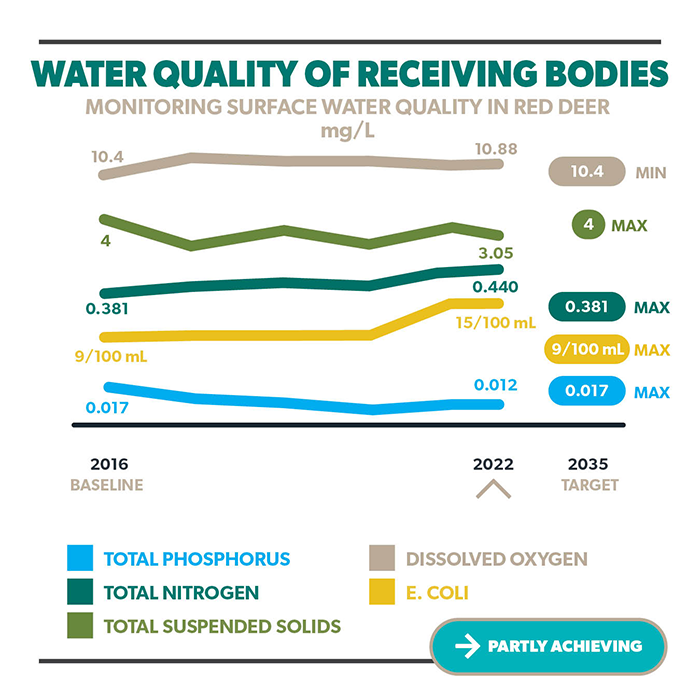
Monitoring potable water* consumption of residential (RES) and industrial/commercial/institutional (ICI) users in litres per capita per day.
| 2022 Results | |||
|---|---|---|---|
| Baseline (2009) | 2022 Result | Target (2035) | |
| RES (litres per capita per day) | 242 | 187 | 169 |
| ICI (litres per capita per day) | 135 | 98 | 95 |
| Historical Results | ||
|---|---|---|
| RES (litres per capita per day) | ICI (litres per capita per day) | |
| 2022 | 187 | 98 |
| 2021 | 196 | 101 |
| 2020 | 192 | 97 |
| 2019 | 180 | 103 |
| 2018 | 193 | 108 |
| 2017 | 191 | 108 |
| 2016 | 192 | 108 |
| 2015 | 203 | 110 |
| 2014 | 195 | 112 |
| 2013 | 204 | 118 |
| 2012 | 210 | 120 |
| 2011 | 211 | 122 |
| 2010 | no report | no report |
| 2009 | 242 | 135 |
* potable water is treated drinking water


